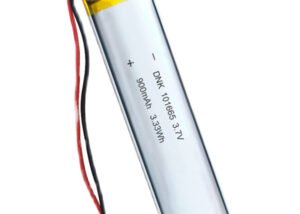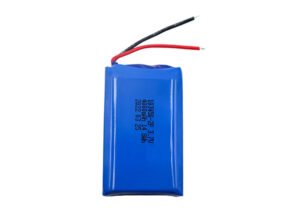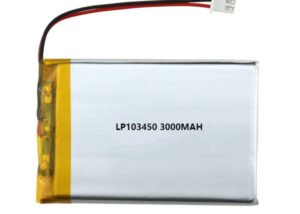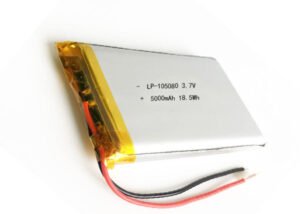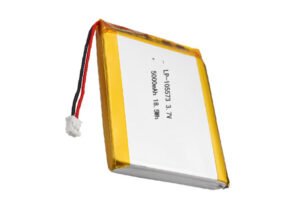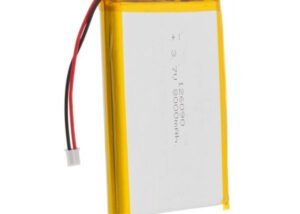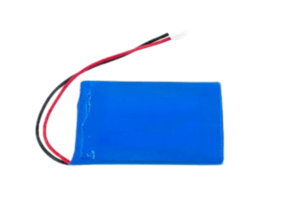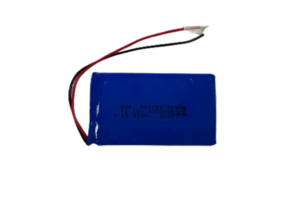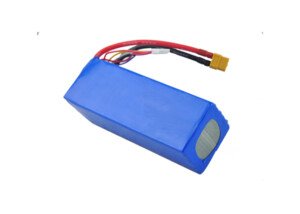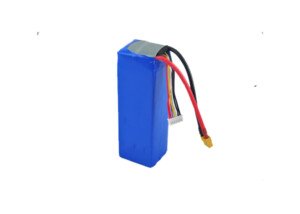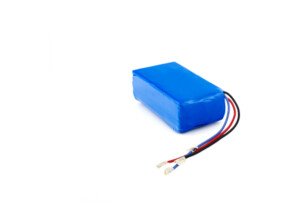Lithium Polymer Battery in Blood Pressure Monitor
Blood pressure monitors are essential medical devices that are used to measure blood pressure. They play a crucial role in monitoring the health of individuals, especially those with hypertension. The accuracy and reliability of blood pressure monitors are critical, as they can be used to diagnose and manage various medical conditions. However, the performance of these devices is highly dependent on the type of battery used. Lithium Polymer (LiPO) batteries have become increasingly popular in recent years due to their high energy density, low self-discharge rate, and long cycle life. In this post, we will explore the advantages of using LiPO batteries in blood pressure monitors and the factors to consider when choosing the right battery for these devices.
LiPO batteries are rechargeable batteries that use a polymer electrolyte to conduct ions between the anode and cathode. They are commonly used in portable electronic devices due to their high energy density, low self-discharge rate, and long cycle life. LiPO batteries have a higher energy density compared to other types of batteries, which means they can store more energy in a smaller size. They also have a low self-discharge rate, which means they can retain their charge for a longer time. Additionally, LiPO batteries have a long cycle life, which means they can be recharged and discharged many times without losing their capacity.
DNK Power is a custom Rechargeable lipolymer battery manufacturer based in China,We have In stock small and compact 3.7V lipo battery, capacity from 5mah, 800mah, 1000mah, 15000mah,10000mah and etc. We focus on the best and cheap small design products that are the most cost-effective, environmentally safe and exceed all of their specifications, we will never let you down, you can check more of our certificates including MSDS UN 38.3, IEC, KC, etc.
Using LiPO batteries in blood pressure monitors has several benefits.
Firstly, LiPO batteries have a high energy density, which means they can provide more power to the device. This is especially important for blood pressure monitors that require a lot of power to inflate the cuff and measure the blood pressure.
Secondly, LiPO batteries have a low self-discharge rate, which means they can retain their charge for a longer time. This is important for blood pressure monitors that are not used frequently, as they can remain charged for a longer time without needing to be recharged.
Finally, LiPO batteries have a long cycle life, which means they can be recharged and discharged many times without losing their capacity. This is important for blood pressure monitors that are used frequently, as they can last for a long time without needing to be replaced.
There are several examples of blood pressure monitors that use LiPO batteries. One example is the Omron 10 Series Wireless Upper Arm Blood Pressure Monitor. This device uses a rechargeable LiPO battery that can be charged using a USB cable. The battery can last for up to 200 measurements on a single charge, and it has a low battery indicator that alerts the user when the battery needs to be charged. Another example is the Withings BPM Connect Wireless Blood Pressure Monitor. This device also uses a rechargeable LiPO battery that can be charged using a USB cable. The battery can last for up to 6 months on a single charge, and it has a low battery indicator that alerts the user when the battery needs to be charged.
Factors to Consider When Choosing a LiPO Battery for Blood Pressure Monitors
When choosing a LiPO battery for blood pressure monitors, there are several factors to consider.
Firstly, the capacity and voltage requirements of the blood pressure monitor should be taken into account. The capacity of the battery determines how much energy it can store, while the voltage determines the amount of power it can provide. It is important to choose a battery that has a capacity and voltage that is compatible with the blood pressure monitor.
Secondly, the size and weight of the battery should be considered. Blood pressure monitors are often portable devices, which means they need to be lightweight and compact. It is important to choose a battery that is small and lightweight enough to fit inside the device without adding too much weight or bulk.
Finally, the safety features and certifications of the battery should be considered. LiPO batteries can be dangerous if they are not handled properly, which is why it is important to choose a battery that has safety features such as overcharge protection, over-discharge protection, and short-circuit protection. Additionally, the battery should be certified by regulatory bodies such as UL or CE to ensure that it meets safety standards.
In conclusion, LiPO batteries offer several advantages over other types of batteries for blood pressure monitors. They have a high energy density, low self-discharge rate, and long cycle life, which makes them ideal for portable electronic devices such as blood pressure monitors. When choosing a LiPO battery for blood pressure monitors, it is important to consider the capacity and voltage requirements, size and weight, and safety features and certifications of the battery. By choosing the right battery, blood pressure monitors can perform better and provide accurate and reliable measurements for a longer time.
Here belowing are some lithium polymer batteries in DNK POWER, you can click and see their details. Hope they will be useful to you.


